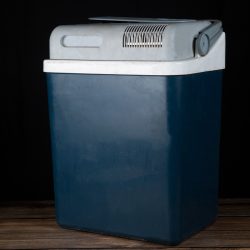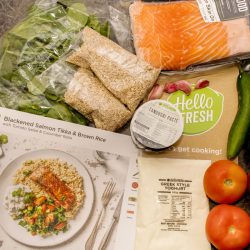Lettuce is a leaf vegetable that you'll find in many dishes. If you want to continue using it, you can put it in the fridge. However, the problem with that is lettuce can freeze in there! So, what can you do? If that's your concern, let's go over some tips.
First, you need to reduce the moisture content of the lettuce. If you wash it after taking it home, roll it over a kitchen towel afterward. Next, divide it into portions and place them in a plastic bag with paper towels. If it still freezes, more factors might be at play. See below:
- Temperature Settings
- Temperature Sensor
- Air Leakage
- Food Placement
Nothing is more unappealing than waking up to see your lettuce has frozen. What's worse is the soggy and limp lettuce you get after defrosting it. When reducing the moisture of the lettuce doesn't work, you'll have to look at your fridge. For more information, keep reading.
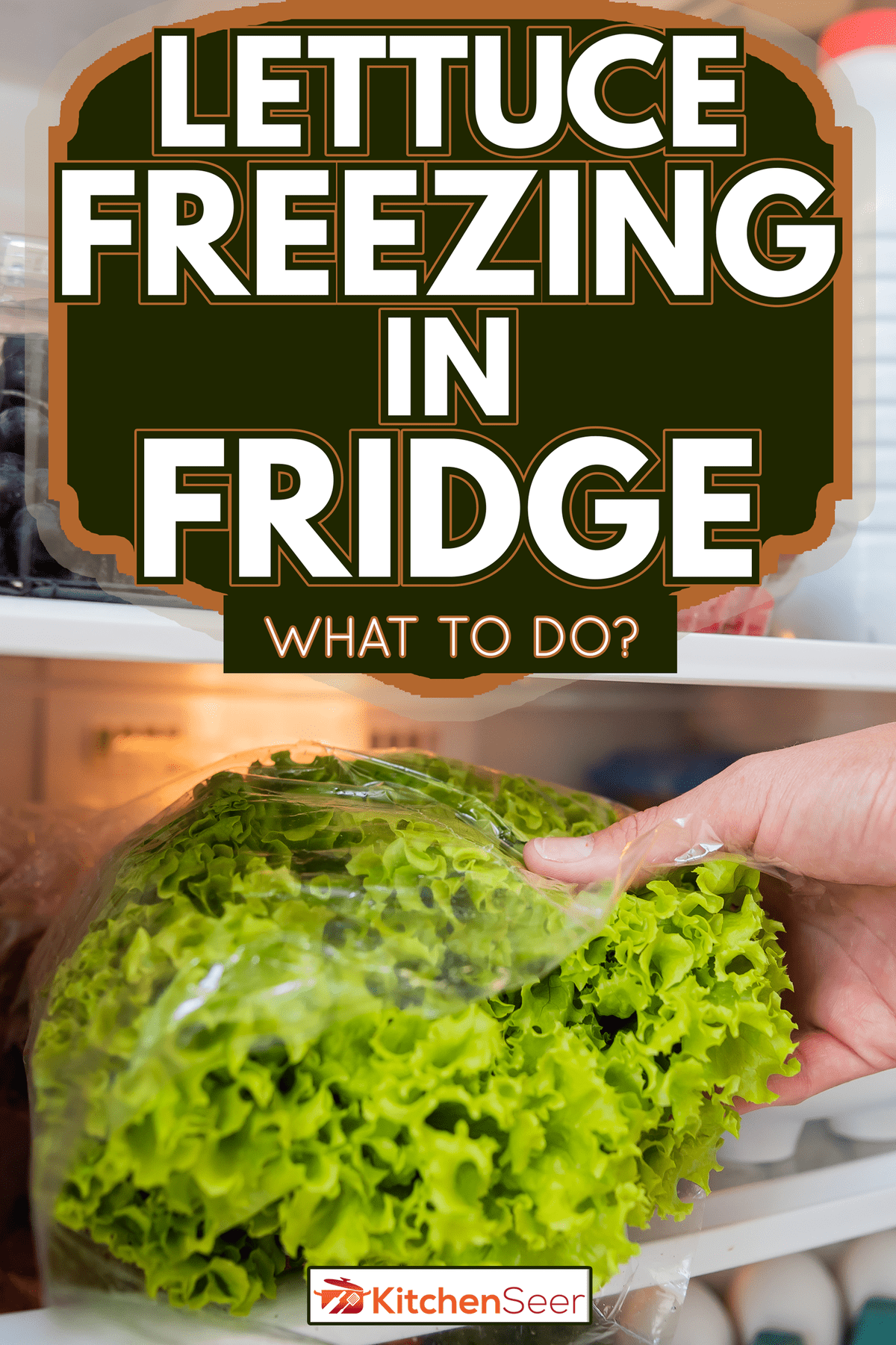
Preventing Your Lettuce From Freezing
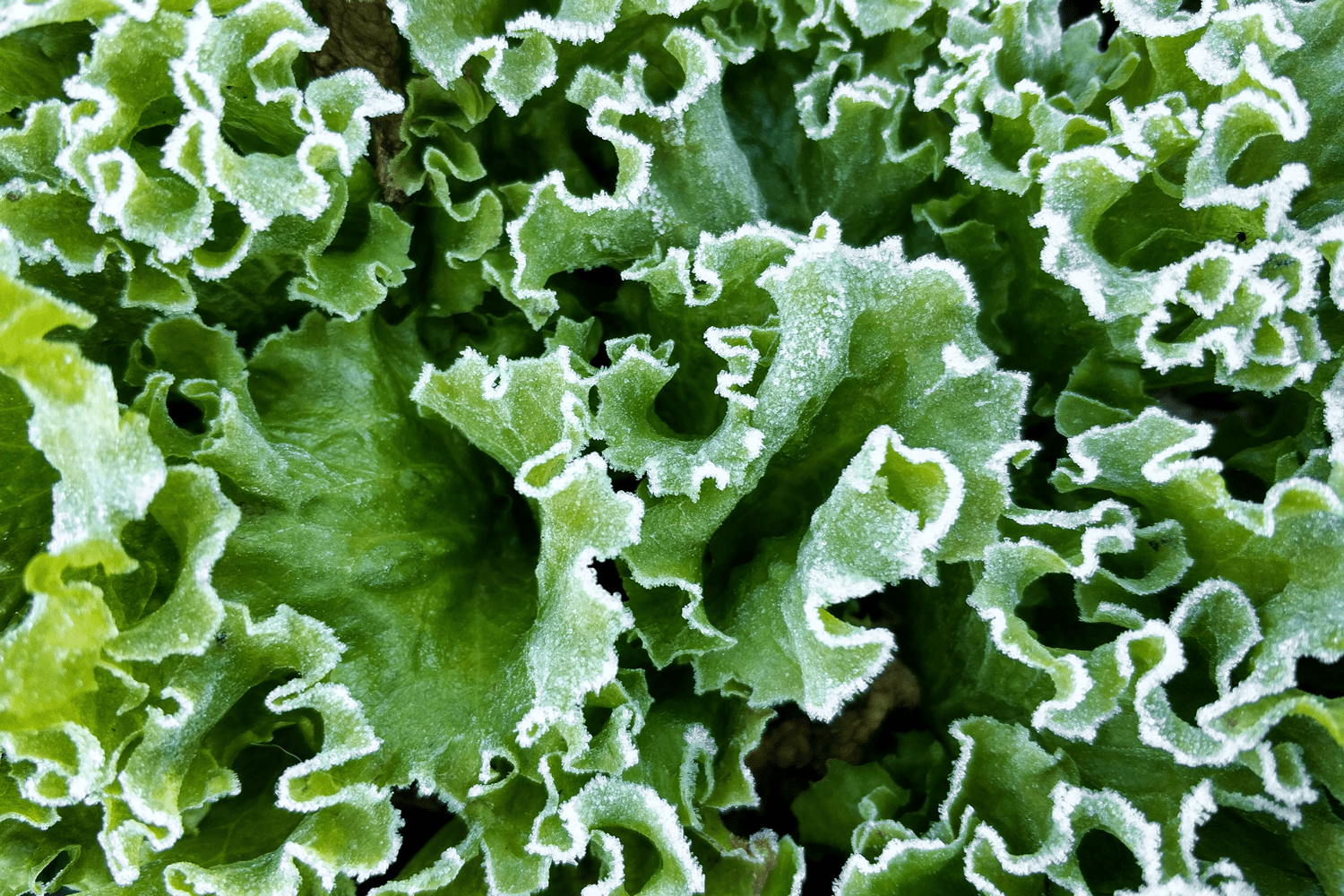
Before looking at the fridge, we'll have to look at how you store your lettuce. It doesn't matter what type of lettuce you buy. Improper storage could be the reason the lettuce ends up frozen.
Typically, you take the lettuce out of the original packaging. The only exception to this is iceberg lettuce. It's typically kept inside its plastic wrapping.
It's acceptable to store iceberg lettuce without taking it out of the packaging. However, it's better to remove other types of lettuce from their original packaging. This way, you can prevent damaged and wilted leaves.
Afterward, wrap the lettuce in a few paper towels and store it in the crisper drawer of your fridge. The crisper drawer is a compartment with a different humidity level than the rest. It's a specialized container for helping keep fruits and vegetables fresh.
Why Does Lettuce Keep Freezing in the Fridge?
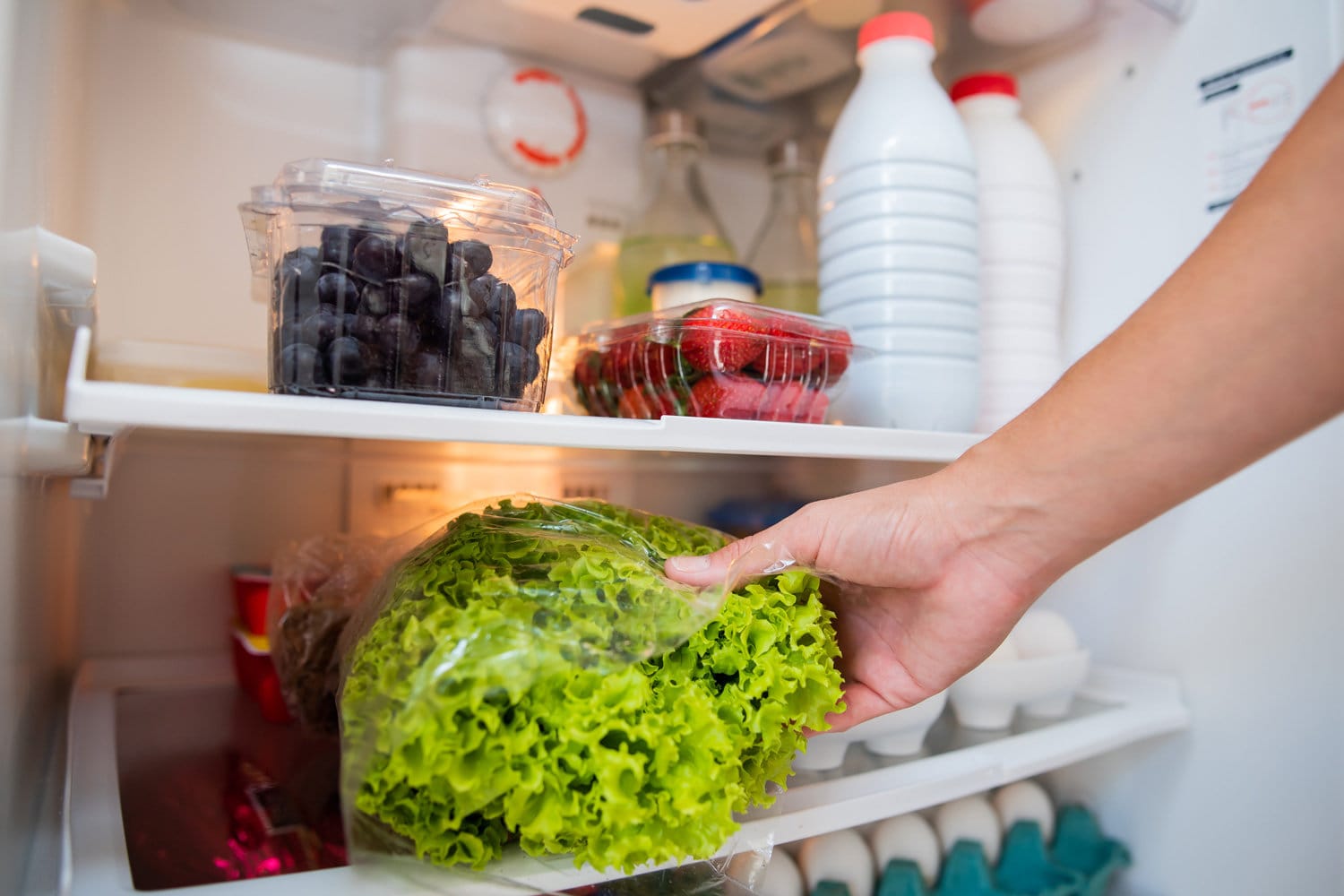
If you're storing lettuce properly, it shouldn't be freezing! Yes, it's fragile, and it tends to spoil quickly. However, it's not supposed to freeze often.
If it keeps freezing, you need to investigate the other products in your fridge. Check if items other than the lettuce are freezing too. When several items are freezing, the refrigerator is most likely the culprit.
1. Temperature Settings
The first area you should check when items freeze is the thermostat. Most fridges operate at a temperature of 36-38 degrees Fahrenheit. It's the optimal temperature range for keeping foods fresh.
Anything below that range increases the potential to freeze. Food items will freeze at temperatures starting at 32 degrees Fahrenheit and below. Temperature changes typically happen by accident.
Otherwise, maybe someone in your household changed the setting. No matter, you can fix this by resetting it. Check your refrigerator owner's manual to learn how to do that.
2. Temperature Sensor
Sometimes, the settings are not the problem. Maybe it's within the 36-40 degree Fahrenheit range. But, you still find frozen lettuce.
In this situation, it might be the sensors that are causing problems. Refrigerators rely on temperature sensors to keep the inside cool. When it malfunctions, it makes the fridge function differently.
It can make the inside too warm or too cold. Another symptom of a faulty temperature sensor is a refrigerator that runs all the time. If this applies to your situation, you'll want to replace the sensor.
3. Air Leakage
As for temperature control, seals are another essential part of the process. The door gasket needs to be tight. This way, it can effectively keep the cold air inside.
When the gasket isn't as tight, air will leak outside. As a result, the fridge will run continuously. So, the inside will get colder. The gasket could be another reason your lettuce is freezing.
Testing your refrigerator's seal is simple. All you need is a dollar. Take that dollar and close the door on the dollar bill. Then, try pulling the bill out.
If you feel tension, the seal is still working as it should. The seal is either weak or broken when the bill slips out easily. Also, you should also check the inner edge of the seal for any signs of damage.
4. Food Placement
When you can't find anything wrong with your fridge, the problem might be where you place the lettuce. As we mentioned beforehand, all fresh produce should go in the crisper drawer. If you aren't doing that, the lettuce might be near an air vent.
The air vent helps circulate cool air around the interior. However, if you have a food item blocking the vent, it's getting more cold air. And this is more problematic with lettuce.
Lettuce is a leafy vegetable with high water content. So, if you're exposing it to more cold air, it will freeze. You can avoid this problem by placing the lettuce elsewhere, preferably in the crisper drawers.
What If You Don't Have Crisper Drawers?
When a fridge lacks crisper drawers, you don't have to give up hope just yet. All the lettuce needs is a similar environment, which you can easily replicate.
First, you'll need to invest in some produce bags. Also, it helps if you line the bag with a paper towel. When you get new lettuce, change the paper.
You don't have to do this for iceberg lettuce. Keep it in its original packaging until you're ready to use it. Of course, you should still keep it away from any air vents.
Click here to see these produce bags on Amazon.
Identify Problematic Areas
In the worst case, the lettuce will continue freezing despite following all the tips above. In this situation, test different areas of your fridge. So, put some lettuce on the top, middle, and lower drawers.
Leave them there overnight and check the results. You might find that some areas are colder than others. Of course, if one of them doesn't freeze your lettuce, you've found a spot that works!
Why Are Things Freezing In The Crisper Drawers?
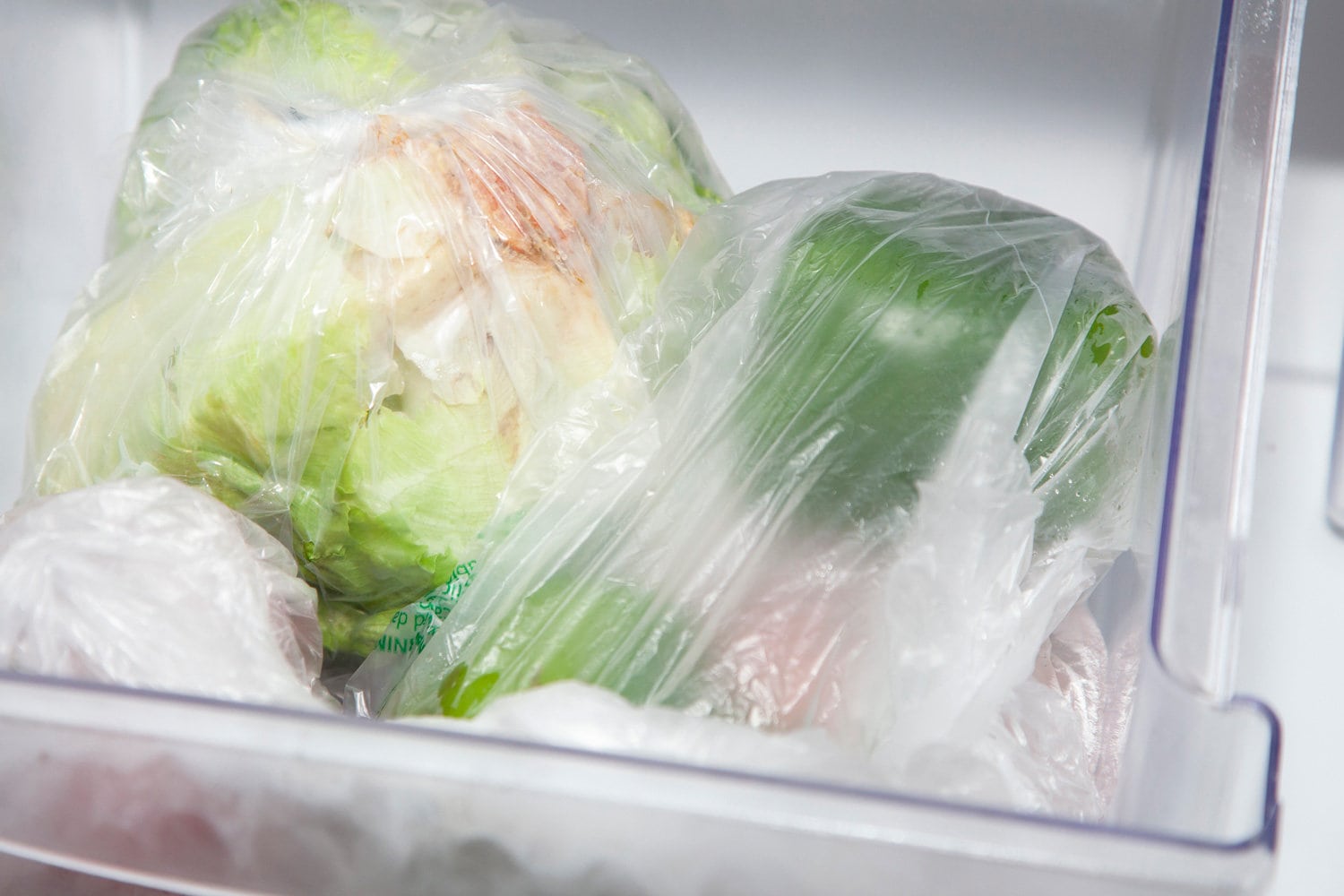
You might find that even your crisper drawers freeze the lettuce. How can that be? After all, isn't the crisper drawer specialized for fresh produce?
Yes, but there are other factors at play here. It might have to do something with how many items are in your fridge. If it's not half full, there isn't enough food to share the cold air.
So, the fresh produce is taking the excess. It's a similar situation to leaving vegetables near an air vent. For lettuce, it's even easier to freeze. Lettuce is around 96% water.
If it's taking the excess cold air, it will be one of the first to freeze. Try filling up your fridge with more items. Manufacturers like General Electric recommend keeping the crisper drawers at least 1/2 full.
This way, other produce share the cold air. The lettuce won't have to take the majority of it!
Can You Eat Lettuce After It Freezes?

Most people would prefer not to eat their lettuce while it's frozen. But one concern comes to mind. Is it edible after it freezes? As you might already know, some fruits and vegetables don't react well to the cold.
It's the same with lettuce. Once it's frozen, you won't get the original texture back. You can consume it in its frozen state. However, if you plan on defrosting it, it won't end well most of the time.
Leafy greens don't like freezing. After you defrost it, it responds by turning slimy and mushy. It's up to you if it's still edible at that point. However, most people would choose to throw it out.
How Long Does Lettuce Last in the Fridge?
The lifespan of lettuce in a fridge depends on the type you buy. There's loose-leaf lettuce and head lettuce. Head lettuce ends to last longer. Loose-leaf lettuce lasts around 7 to 10 days in the fridge.
If the head's still intact and it's unwashed, head lettuce can last 1 to 3 weeks. Of course, this timeframe is assuming you're storing the lettuce properly.
How Do You Keep Lettuce Fresh?
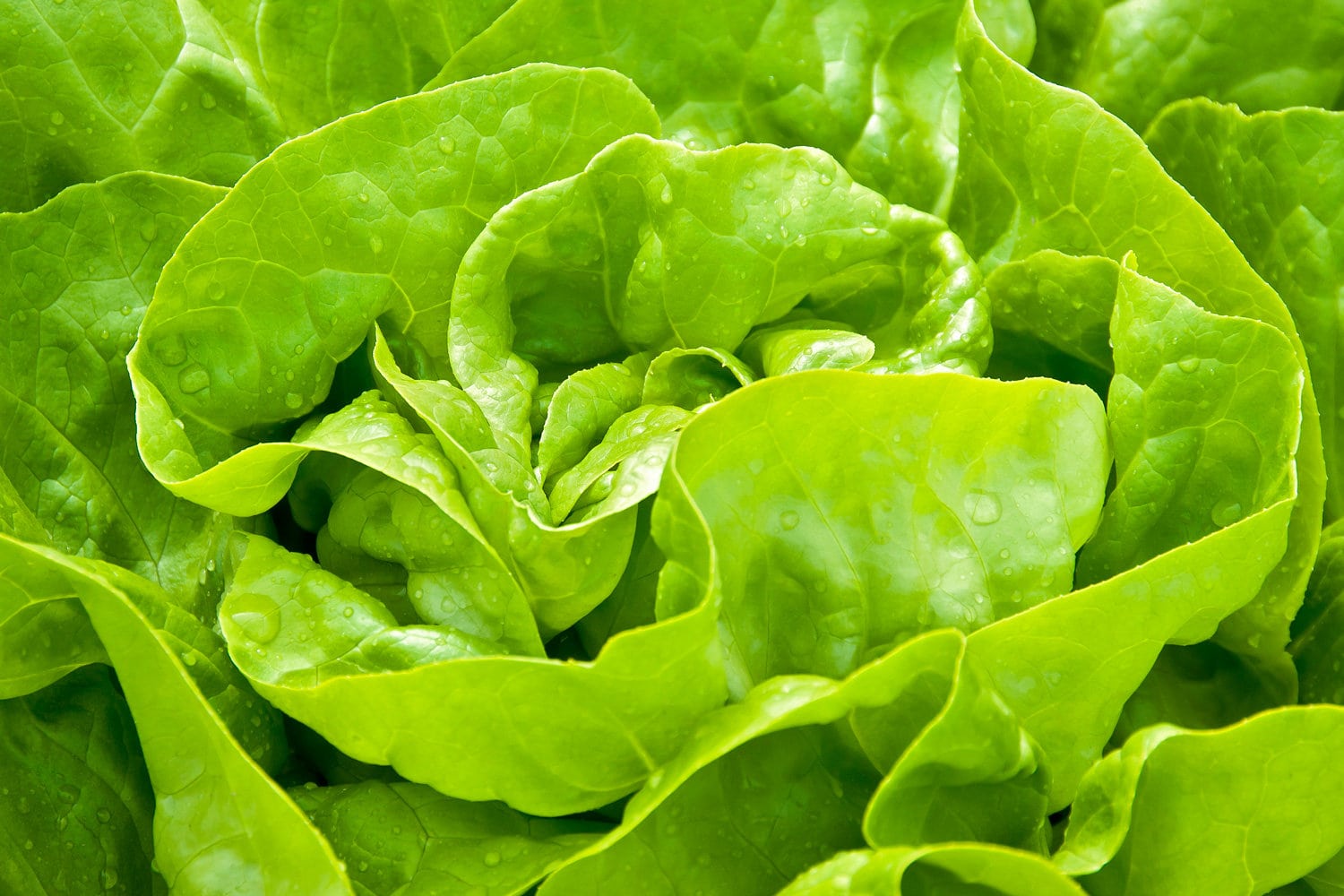
If you're not planning to use your leafy greens right away, you'll want to make it last as long as possible. All it takes is making a few adjustments to your storage methods.
Do you wash the lettuce as soon as you get home? Avoid doing that, if you want it to last. Extra moisture has the potential to make the leaves wilt. Therefore, it's better if you leave the lettuce unwashed and dry.
Lining the packaging with paper towels also helps. If you bought shredded lettuce, dry it and wrap it up with a kitchen towel. Use rubber bands to secure it in there.
Some people would prefer washing the lettuce before they store it away. Yes, you can do that. But you'll have to do a bit more work. Try your best to pat it dry. Then, tightly seal it in a plastic bag.
Final Takeaway
Lettuce is usually more fragile than most vegetables. And we learned there are various reasons your fridge is freezing the lettuce. Some problems have easy fixes. But others require replacement parts. Regardless, we hope you found the information above helpful!
Before you go, do you have other kitchen concerns? Do you use a cast iron frequently? You might've held off on seasoning it for too long. To learn more, check out:
Poorly Seasoned Cast Iron: What To Do Now?
Are you preparing pizza dough? Some people have problems stretching it! If you'd like to learn more about the process, check out:
Pizza Dough Won't Stretch - What To Do?


![Ceramic dishware and cutlery in kitchen drawers, How To Remove Kitchen Drawers [A Complete Guide]](https://kitchenseer.com/wp-content/uploads/2021/08/Ceramic-dishware-and-cutlery-in-kitchen-drawers-250x250.jpg)


